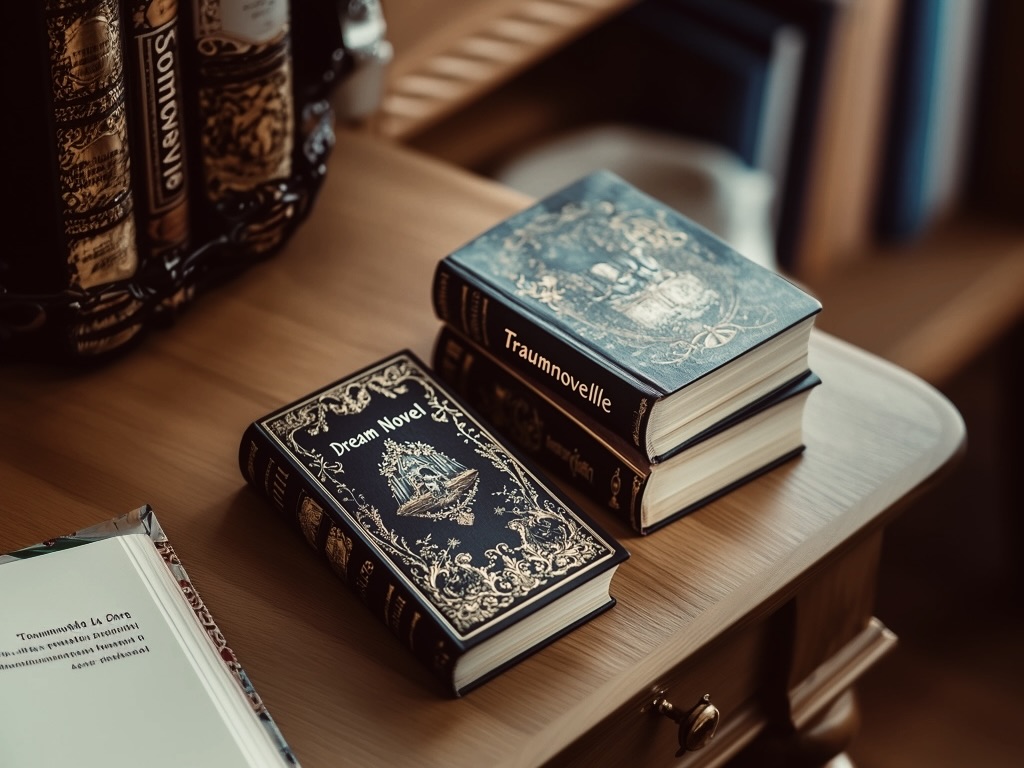Creative (Mis)Translation

Hello, everyone!
Translation is a subtle art, and this week I’ve come to realize just how much every decision impacts the final text.
I’m currently taking a class in literary translation with Susan Bernofsky, a leading translator of modernist and contemporary German-language literature into English. One of our recent assignments had us triangulate two existing translations of the same work with our own. It sounded straightforward at first—just compare, borrow a little, and tweak things as needed, right? But when I sat down with the two translations in front of me, I was surprised by how wildly different they were. It really drove home how much a translator’s priorities shape the final text. One translation focused on preserving the atmosphere of the original, while the other prioritized making the text sound smooth and polished in English. And then there was me, caught somewhere in between.
For this exercise, I worked on a passage from the final page of Arthur Schnitzler’s Traumnovelle (that you might know better as Eyes Wide Shut, Stanley Kubrick’s movie adaptation), which explores the blurred boundary between dream and reality as a married man embarks on a surreal, nighttime journey of sexual temptation and existential self-discovery. Here are the three translations and the original:
Translated by Otto P. Schinnerer (1927)
“Just as sure as I am that the reality of one night, let alone that of a whole lifetime, is not the whole truth.”
“And no dream,” he said with a slight sigh, “is entirely a dream.”
She took his head and pillowed it on her breast. “Now I suppose we are awake,” she said–“for a long time to come.”
He was on the point of saying, “Forever,” but before he could speak, she laid her finger on his lips and whispered, as if to herself: “Never inquire into the future.”
Translated by J. M. Q. Davies (1999)
“As sure as I am of my sense that neither the reality of a single night nor even of a person's entire life can be equated with the full truth about his innermost being.”
“And no dream,” he sighed quietly, “is altogether a dream.”
She took his head and pillowed it tenderly against her breast. “Now we're truely awake,” she said–“at least for a good while.”
He wanted to add: for ever. But before he had a chance to speak, she laid a finger on his lips and whispered as though to herself, “Never inquire into the future.”
“And no dream,” he sighed, “is purely a dream.”
She took his head and pillowed it tenderly pn her breast. “Now I suppose we're awake,” she said–“for a long time.”
Forever, he wanted to add, but before he could say the word, she laid a finger on his lips and whispered, as if to herself: “Never inquire into the future.”
Arthur Schnitzler (1925)
„So gewiß, als ich ahne, daß die Wirklichkeit einer Nacht, ja daß nicht einmal die eines ganzen Menschenlebens zugleich auch seine innerste Wahrheit bedeutet.“
„Und kein Traum,“ seufzte er leise, „ist völlig Traum.“
Sie nahm seinen Kopf in beide Hände und bettete ihn innig an ihre Brust. „Nun sind wir wohl erwacht“, sagte sie – „für lange.“
Für immer, wollte er hinzufügen, aber noch ehe er die Worte ausgesprochen, legte sie ihm einen Finger auf die Lippen und, wie vor sich hin, flüsterte sie: „Niemals in die Zukunft fragen.“
As you can tell, J. M. Q. Davies leans heavily on preserving the feel of the original, while Schinnerer makes the prose more digestible for an English-speaking audience. And then there is mine—somewhere in the middle, I think. I wanted to keep the mood intact, but I also couldn’t resist smoothing out some of the more awkward bits (especially the first line of dialogue, which is difficult to understand even in German).
It felt a bit like playing tug-of-war, trying to decide where my loyalties should lie. The first translation is clearer and more straightforward, but the second one feels closer to the original German, keeping the mood in tact. And then there’s mine, which tries to strike a balance between the two—maintaining the feel of the original while smoothing out the flow for English readers.
As Janet Malcolm writes in her essay Socks:
What side are you on? Whose interests should the translator serve? Those of the reader of simple wants, who only asks of a translation that it advance rather than impede his pleasure and understanding? Or those of the more advanced (or masochistic) school who want to know what the original was ‘like’?” It’s a tricky question, and honestly, I’m still wondering whether we really have to pick a side. Can’t we strike a balance between staying true to the original and making it readable?
As translators, we’re constantly balancing between two poles—those who want an easy, seamless reading experience and those who crave the intricacies of the original text. But do we really have to pick a side? I’m starting to think that translation isn’t about choosing one over the other, but rather about finding a middle ground. It’s not about erasing the complexity, but about making that complexity accessible. After all, a good translation should reflect the voice of the original author, but it should also speak fluently in its new language. Maybe the answer lies in the balance—keeping enough of the original to feel authentic, while ensuring that the translation moves smoothly for the reader. It’s a delicate balance, but one that’s worth striving for.
Right now, I’m working on a translation sample of It Is Only Us (German: Es sind nur wir) by Austrian author Martin Peichl, and I’m finding myself in the same situation all over again. How do you stay true to the original while also crafting something that flows well in English? I’ll keep you posted on how it goes and whether I manage to strike that elusive balance.
Talk to you soon—
—Lara